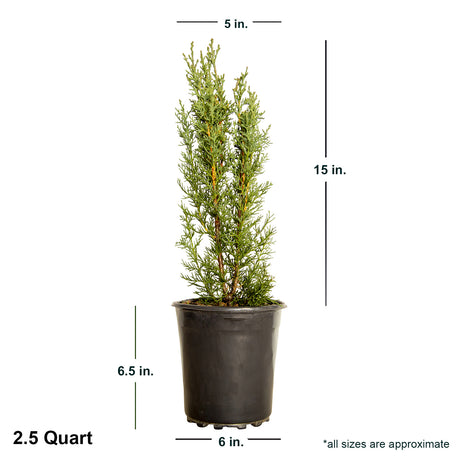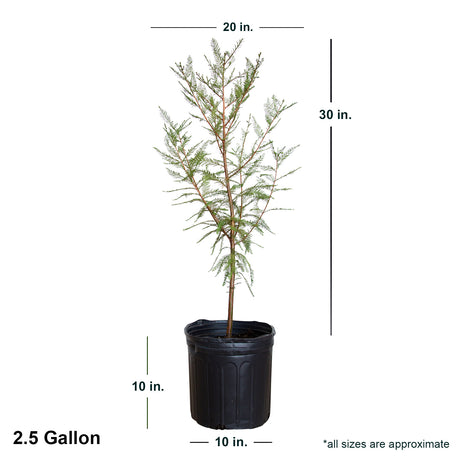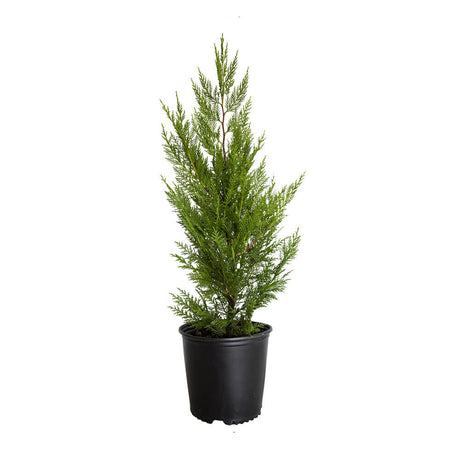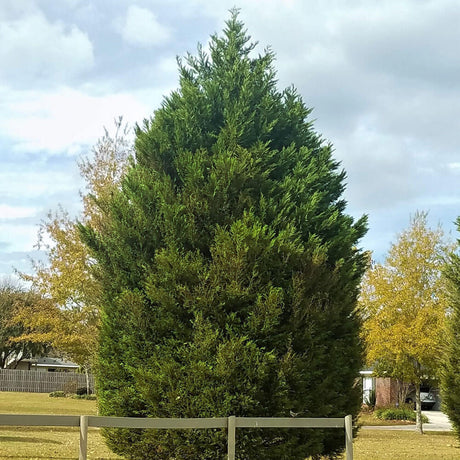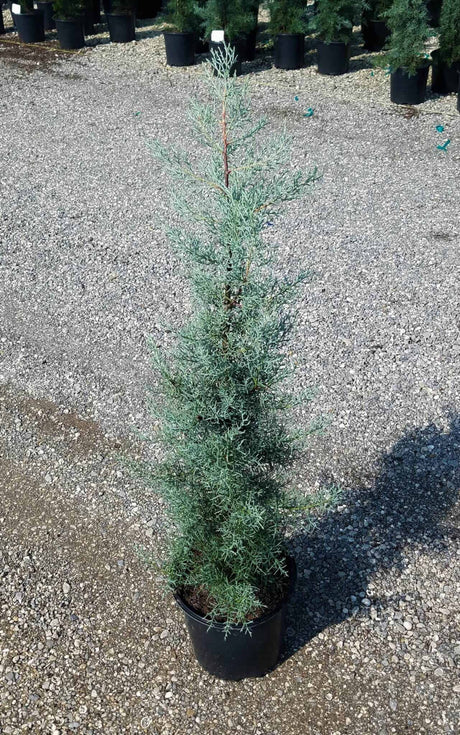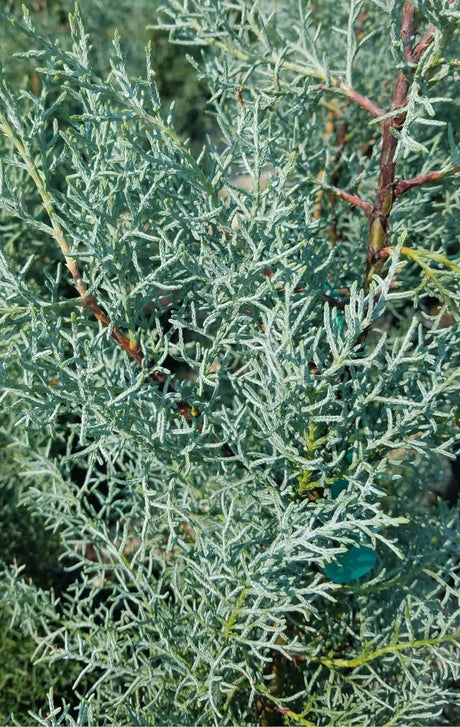FiltersFilter & Sort
Flowerwood
Carolina Sapphire Cypress (Arizona Cypress)
From $19.99Unit price /UnavailableIn stock (1668)Flowerwood
Living Christmas Tree - Carolina Sapphire Arizona Cypress
From $35.00Unit price /UnavailableIn stock (59)- Sold out
- Sold out
The family Cupressaceae contains numerous incredibly popular landscaping Cypress tree selections, such as the Italian Cypress and Leyland Cypress. It also includes dwarf landscaping varieties known as Chamaecyparis, typically referred to as False Cypress due to their shrubby growth habit. Furthermore, Arborvitae are part of the Cypress family, however, you can find those on PlantsbyMail.com under the category Arborvitae (Thuja).
Why buy Cypress Trees?
Cypress Trees have been quite popular with gardeners for hundreds of years, as hard as that may be to believe.Cypress Plants Are Versatile
They adapt to a wide range of soil qualities. So you rarely need to worry that your soil isn't the right type for your new Cypress. However, do keep in mind that if your soil is low in nutrients, your tree won't grow as quickly as it could. Provide supplementary fertilizer 1-2 times per year to counteract this issue.Cypress Trees are Long-Lived
You can literally plant Cypress Trees for your great-great-great-great-great-grandchildren to enjoy. They really live that long! Some Italian Cypress Trees are documented as being close to a thousand years old.Many Cypress Trees are Fast-Growing
Some of the more popular Cypress Trees will range from fast-growing to RAPIDLY fast-growing. The Leyland Cypress is a well-known example of a rapidly fast-growing Cypress. In ideal conditions, it can grow 3-5 feet every year! The Green Giant Arborvitae is also known for this speedy growing nature. The Italian Cypress is no slouch in its own right. It can grow 2-3 feet every year! Therefore, these guys are perfect for a spot where you need a privacy screen and you want it there quickly.They have Dense Foliage, Ideal for Privacy Screens
Cypress Tree's flat evergreen leaves lay close together, creating an incredibly effective, nearly impenetrable wall of foliage. Rest easy knowing that your yard is secure from nosey neighbors.What else can Cypress Trees do?
Cypress Trees are more than just a pretty face. They have a highly functional place in the landscape.Cypress Trees For Landscaping
Cypress Trees' dense foliage naturally filters the air that passes through it. They’re perfect for blocking out and scrubbing pollutants from busy streets next to your yard.Use them to Shield your Yard from the Wind
They’re excellent at blocking out wind. You can even use them to insulate your house from chilling winter winds.They are Effective Noise Dampeners
Sick and tired of road noise? Is your neighbor’s motorcycle driving you batty? Plant a screen or double screen of Arborvitaes! Their thick foliage absorbs noise beautifully and will give you a nice evergreen background to enjoy in your landscape.Planting Tips for Cypress Trees
To get the most out of your Cypress Trees, ensure that you're picking the correct one for your growing conditions.- Afterward, dig a hole three times the width of the root ball of your plant.
- Mix your native soil with gardening soil to provide extra nutrients, this step isn't 100% necessary for Cypress.
- Backfill the hole and top with 3-4 inches of mulch to help retain moisture.
- Water your new planting 2-3 times per week for the first growing season.


